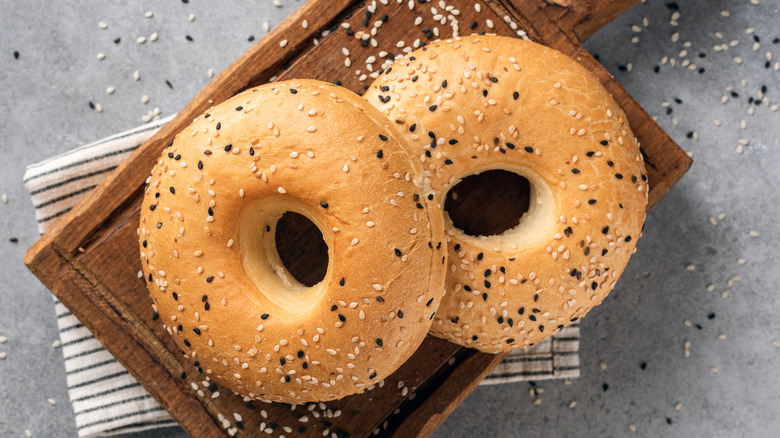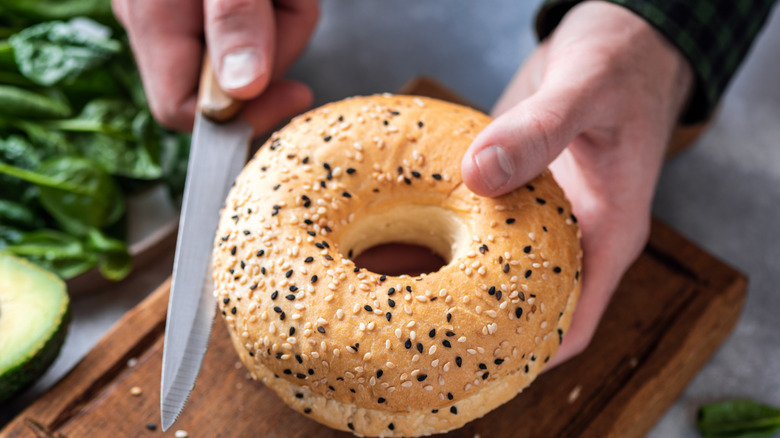This Bagel-Related Injury Sends Thousands Of People To The Hospital Every Year
People who eat seafood must be ridiculously brave. Sure, firefighters wading through knee-deep flames to emerge triumphant cradling tiny babies are fairly tough, but nothing compares to those hardened folk who can take on the mighty challenges posed by gnawing on sea creatures.
The giant, crushing claws possessed by lobsters are perhaps the biggest threat to human safety, but let's not forget the completely dominating stench of tuna. The freaky gloopiness of oysters (that share an uncanny resemblance to mashed snails) exists only to ruin humanity with uncontrollable confusion and rage.
Despite seafood presenting such an obvious danger to us all, it is apparently a far humbler snack that poses a greater risk to our safety. It's not toast flying out of toasters and slamming people in the nose, nor is it pancakes jumping out of the pan and gluing to faces – the dangerous food is actually the delightful bagel (via New Yorker Bagels).
Slicing bagels is as painful for hands as it is for the snack
Although the circular dough of bagels may not seem to be an immediate risk to public health, Kitchn records that almost 2,000 people every year end up in Emergency Rooms, pouring with blood, because their bagels got the better of them. New Yorker Bagels notes that slicing bagels is the fifth most risky activity in the kitchen (presumably only topped by stunts like fork juggling or drowning cornflakes in gin).
Since the simple process of halving a bagel is filled with unparalleled horrors, in 1995, UCLA's chief of emergency medicine, Dr. Marshall T. Morgan, issued critical information to the Los Angeles Times for anyone brave enough to take on the early morning ordeal. The key is to cut away from your hand and body, reducing the risk of injury, as well as using a cutting board to provide support. Trying to chop frozen bagels is ill-advised.
New Yorker Bagels also shares useful tips for preparing the estimated 3 billion bagels eaten at home every year. It recommends using a knife with a serrated edge or a bagel slicer, as well as quickly microwaving stale bagels to soften the edges.

